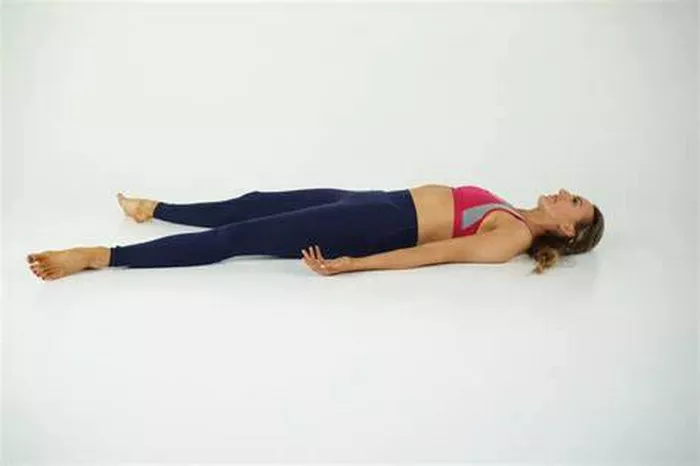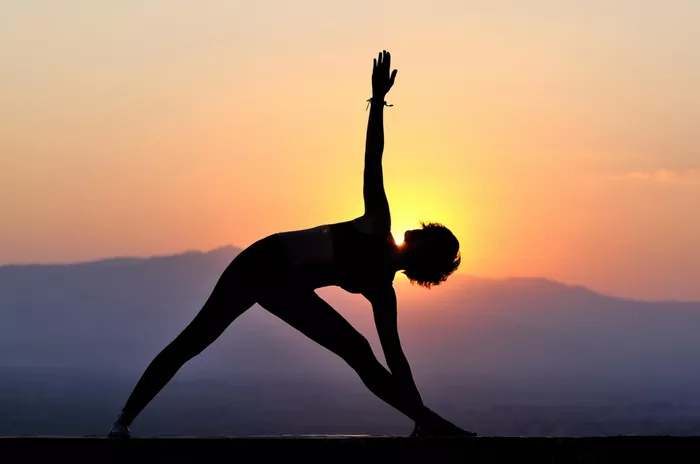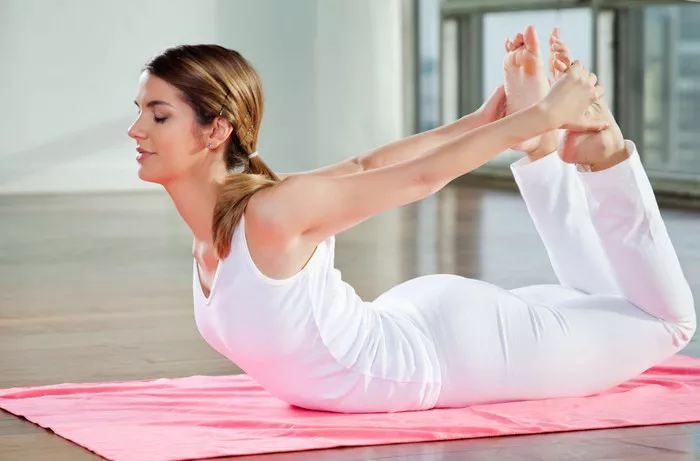Yoga is not merely a physical exercise; it is a holistic approach to well-being that integrates the mind, body, and spirit. Within the vast repertoire of yoga poses lies the graceful and empowering Airplane Pose (also known as Warrior 3). This pose, with its roots in both physical prowess and spiritual symbolism, offers practitioners a journey toward balance, strength, and inner peace.
Origins and Symbolism
Like many yoga asanas, the Airplane Pose draws inspiration from nature and mythology. Its Sanskrit name, “Virabhadrasana III,” pays homage to Virabhadra, a fierce warrior created by the Hindu god Shiva. Legend has it that Virabhadra was born from a lock of Shiva’s hair, imbued with immense power and courage. In the Airplane Pose, practitioners embody the strength and determination of Virabhadra as they balance on one leg, arms extended like wings.
Symbolically, the pose represents the warrior’s unwavering focus and ability to navigate life’s challenges with grace and resilience. It teaches practitioners to find stability and poise amidst turbulence, both on and off the yoga mat.
Physical and Mental Benefits
The Airplane Pose offers a plethora of physical and mental benefits, making it a valuable addition to any yoga practice.
Physically, this pose strengthens the entire body, with a particular focus on the legs, core, and shoulders. As practitioners engage their muscles to maintain balance, they build stability and endurance. The pose also improves posture and alignment, helping to alleviate back pain and prevent injuries.
Mentally, the Airplane Pose cultivates concentration and mindfulness. Balancing on one leg requires heightened awareness and mental focus, quieting the chatter of the mind. As practitioners breathe deeply and steady their gaze, they experience a sense of calm and clarity.
Furthermore, the pose stimulates the sacral chakra, Svadhisthana, which governs creativity, passion, and emotional balance. By activating this energy center, practitioners unlock their creative potential and enhance their emotional resilience.
Variations and Modifications
Yoga is a practice of adaptation and personalization, and the Airplane Pose is no exception. There are several variations and modifications to accommodate practitioners of all levels and abilities.
For beginners, practicing with a block or chair can provide additional support and stability. Placing the hands on a block or the back of a chair allows practitioners to focus on alignment and balance without the fear of falling.
Intermediate and advanced practitioners can explore variations that deepen the pose’s challenge. One such variation is the Half Moon Airplane Pose, where the top arm extends overhead while the bottom arm rests on the supporting leg. This variation increases the stretch along the side body and enhances balance and core strength.
For those seeking an extra challenge, the Bound Airplane Pose incorporates a bind with the hands behind the back. This variation not only requires greater flexibility but also opens the chest and shoulders, promoting a sense of expansion and freedom.
Step-by-Step Instructions
Practicing the Airplane Pose requires mindful awareness and attention to alignment. Follow these step-by-step instructions to experience the full benefits of the pose:
- Begin standing at the top of your mat with your feet hip-width apart and arms by your sides.
- Shift your weight onto your left foot and engage your core.
- On an inhale, extend your arms overhead, reaching toward the sky with your fingertips.
- Exhale as you hinge forward at your hips, shifting your weight onto your left leg.
- Simultaneously lift your right leg behind you, keeping it parallel to the floor.
- Engage your right glute and hamstring to lift your leg higher, creating a straight line from your heel to your head.
- Extend your arms forward, palms facing each other, and gaze at a point on the floor for balance.
- Hold the pose for 5-10 breaths, maintaining a steady breath and steady gaze.
- To release, slowly lower your right leg to the floor and return to standing.
- Repeat on the opposite side, balancing on your right leg and lifting your left leg behind you.
Precautions and Contraindications
While the Airplane Pose offers numerous benefits, it is essential to practice with caution, especially if you have any pre-existing medical conditions or injuries. Consider the following precautions and contraindications before attempting the pose:
1. Avoid practicing the Airplane Pose if you have recent or chronic injuries to the ankles, knees, hips, or lower back.
2. If you have high blood pressure or heart problems, avoid holding your breath or straining during the pose. Practice slow, controlled breathing throughout.
3. Pregnant individuals should approach the pose with caution and may choose to modify by keeping the lifted leg bent or practicing against a wall for support.
4. If you experience dizziness or discomfort during the pose, come out of it slowly and return to a neutral standing position.
5. Always listen to your body and honor its limitations. If a particular variation or modification feels unsafe or uncomfortable, choose a gentler option or skip the pose altogether.
Conclusion
In conclusion, the Airplane Pose is a dynamic and empowering yoga asana that invites practitioners to embody the strength, focus, and grace of a warrior. By integrating physical challenge with mental calmness, this pose offers a pathway to balance, resilience, and inner peace. Whether you’re a seasoned yogi or a beginner on the mat, exploring the Airplane Pose can elevate your practice and uplift your spirit.
FAQs:
What is the queen pose in yoga?
The queen pose in yoga is commonly referred to as “Reclining Bound Angle Pose” or “Supta Baddha Konasana.” This restorative pose involves reclining on the back with the soles of the feet together and knees falling open to the sides. It helps open the hips, groin, and chest while promoting relaxation and stress relief.
Which yoga pose is best for anxiety?
One of the most effective yoga poses for anxiety is “Child’s Pose” or “Balasana.” This gentle resting pose involves kneeling on the mat, sitting back on the heels, and then folding the torso forward to rest on the thighs with arms extended or relaxed by the sides. Child’s Pose promotes deep breathing, stretches the spine, and calms the nervous system, making it an excellent choice for reducing anxiety and promoting relaxation.
Which yoga pose is best for sleep?
“Legs-Up-the-Wall Pose” or “Viparita Karani” is often recommended as the best yoga pose for promoting better sleep. In this pose, practitioners lie on their backs with their legs extended upward against a wall or elevated surface, forming a 90-degree angle with the body. Legs-Up-the-Wall Pose promotes relaxation, relieves tension in the legs and lower back, and encourages circulation, making it an ideal pre-sleep posture to calm the mind and prepare the body for restful sleep.






















